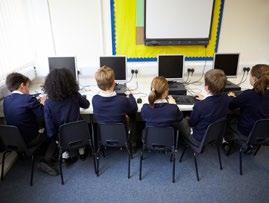
1 minute read
Providing a range of levels of abilities in the class
other ways, such as the use of music or slideshows as they enter the classroom to focus their attention on the topic of the lesson at hand. • To meet the demands of flexible grouping, do the following:
1. Allow for adequate space between tables or desks. 2. Vary seating arrangements. 3. Allocate a specific area of the classroom for group meetings, independent work, and free time. 4. If possible, position technology in a spot that easily accommodates frequent use. (Smith & Throne, 2007, p. 220)
Advertisement
A student’s abilities consist of not one single attribute, but prior knowledge and experience of subject matter, ICT, literacy, numeracy and other key skills and learning styles. It is important that you build up a profile of each student’s abilities and not base your expectations of what individuals can achieve either on the perceived ability of the whole class.
The strategies that you can use to cater for different abilities include (Kennewell, 2004, pp. 150-1):

Task – there can be different tasks or different variations of the same task set for different students. The tasks can cover the same topic, but the less able may have more limited learning objectives or they may be expected to address them in a simpler way.
Response – the same task is set for all students, but it can be completed successfully in many different ways. The most able students are encouraged to produce responses that are deeper, more complex, more detailed or wider-ranging than less able students.



